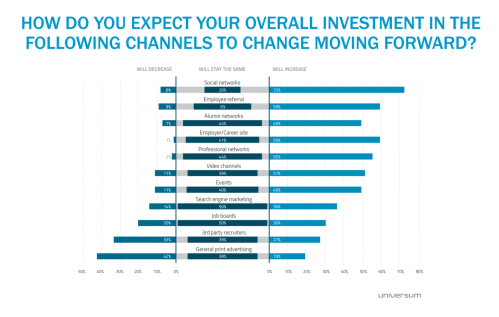
Well, it’s that time of year. All kinds of new research reports are being published – the kinds of reports that we collect and never seem to have enough time to read. We’ve all got them on our hard drives. But here’s one you’ll download and read. Multiple times. The information is that useful!
Of course, I’m talking about the Candidate Experience 2016 report. It’s here! Talent Board, the non-profit organization behind the data collection, research, and report, has stepped up to the plate again. As background, Talent Board, was founded by Gerry Crispin, Elaine Orler, and Ed Newman, in 2010 to “recognize the candidate experience offered by companies throughout the entire recruitment cycle and to forever change the manner in which job candidates are treated.” Starting first with the North America market, it has since grown to include the United Kingdom, EMEA (Europe, the Middle East and Africa), as well as the Asia Pacific region. I’ll share information from the North America market, but know that there are layers of data and analysis that are truly global in their reach.
For 2016, data were collected from 183,000 candidates who applied to more than 240 organizations who wanted to know what their candidates thought about their experience as employment candidates.
Broken down into three major sections – Attract, Recruit, and Hire – the data collected are fascinating. Within these three sections are subsections that cover the complete candidate experience: Employer Branding, Recruitment Marketing and Sourcing in the Attract section; Apply, Screen and Disposition, and Interview and Select in the Recruit section; and Offer, Onboarding and New Hire in the Hire section. Within each of these subsections the data and analysis (and case studies), are all organized with the following structure:
- What It Is
- What Candidates Want
- What Employers Are Doing
- Key Recommendations: What CandE Award Winners Do Better
This structure makes reading the analysis and report easy. Although 114 pages long, it’s easy to work through the material because of its organization. You won’t probably read this in one sitting, but its structure makes it easy to come back and continue reading.
Case studies include organizations like Capital One, CH2M, Delta Airlines, GE, Informatica, and several others. This is good stuff, folks. It shows how leading organizations are thinking about and executing on their need for talent in new and highly impactful ways. Charts abound and they are easy to read and understand, and easy to translate into new approaches and actions in your organization.
Perhaps the simplest graphs that create the case for attending to the candidate experience are these:
They create the critical business case for investing in the experience of your employment candidates – just as you would invest in the experience of your employees or customers. Pretty simple stuff. Simple, and hard to execute. The beauty of this report – and the attending webinars, awards, and activities – is that the data and analysis show clearly what strategies are working and what the impact of those strategies are in an increasingly critical market demographic: your potential employees.
If you aren’t familiar with “candidate experience,” read this report. If you are familiar with “candidate experience,” get involved. The resources provided through Talent Board are extensive. Attending to the experience of your candidates could make the difference in your talent acquisition strategies and plans. And your ability to deliver the foundation for your organization’s growth: the right people with the right skills at the right time.











